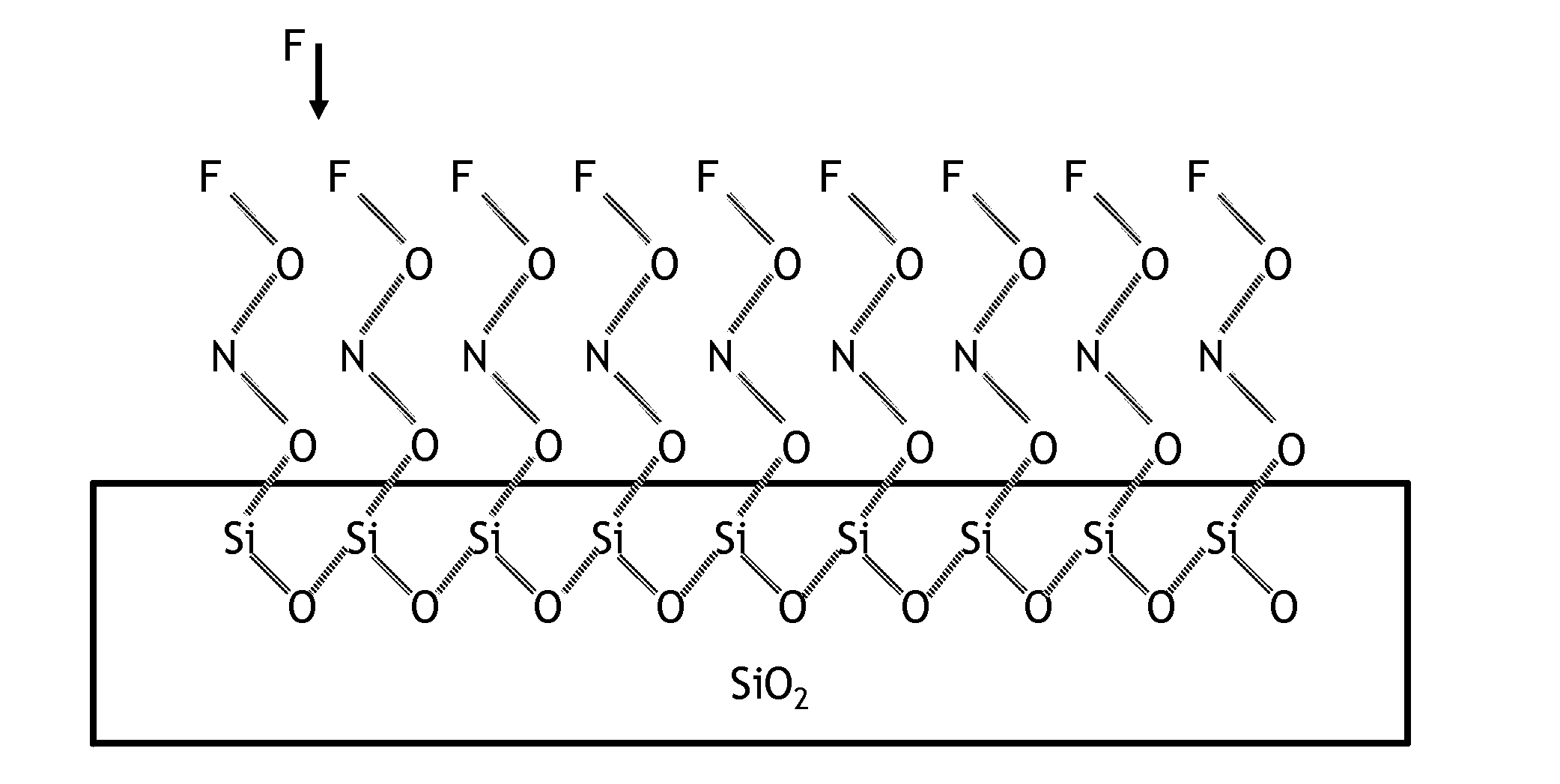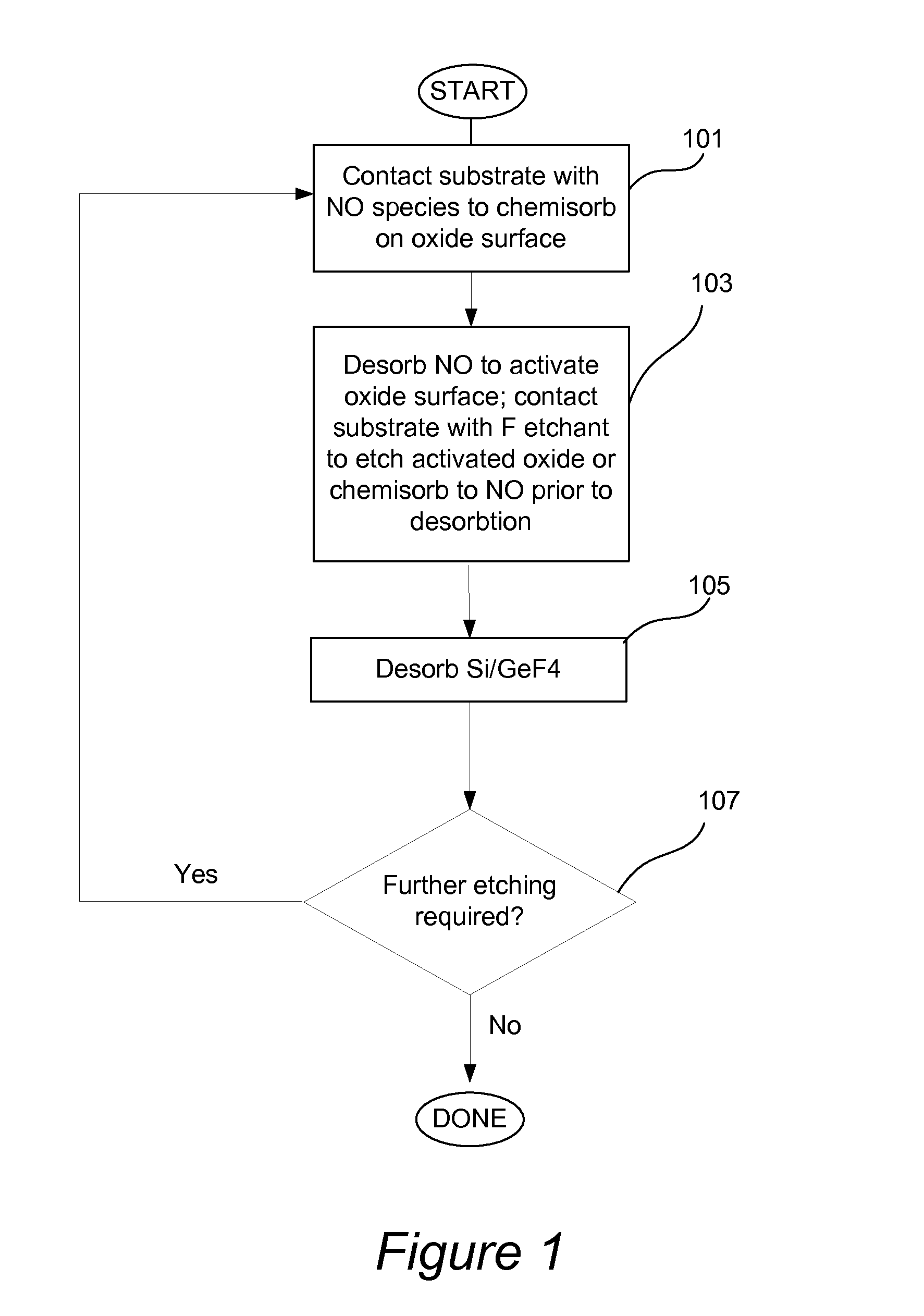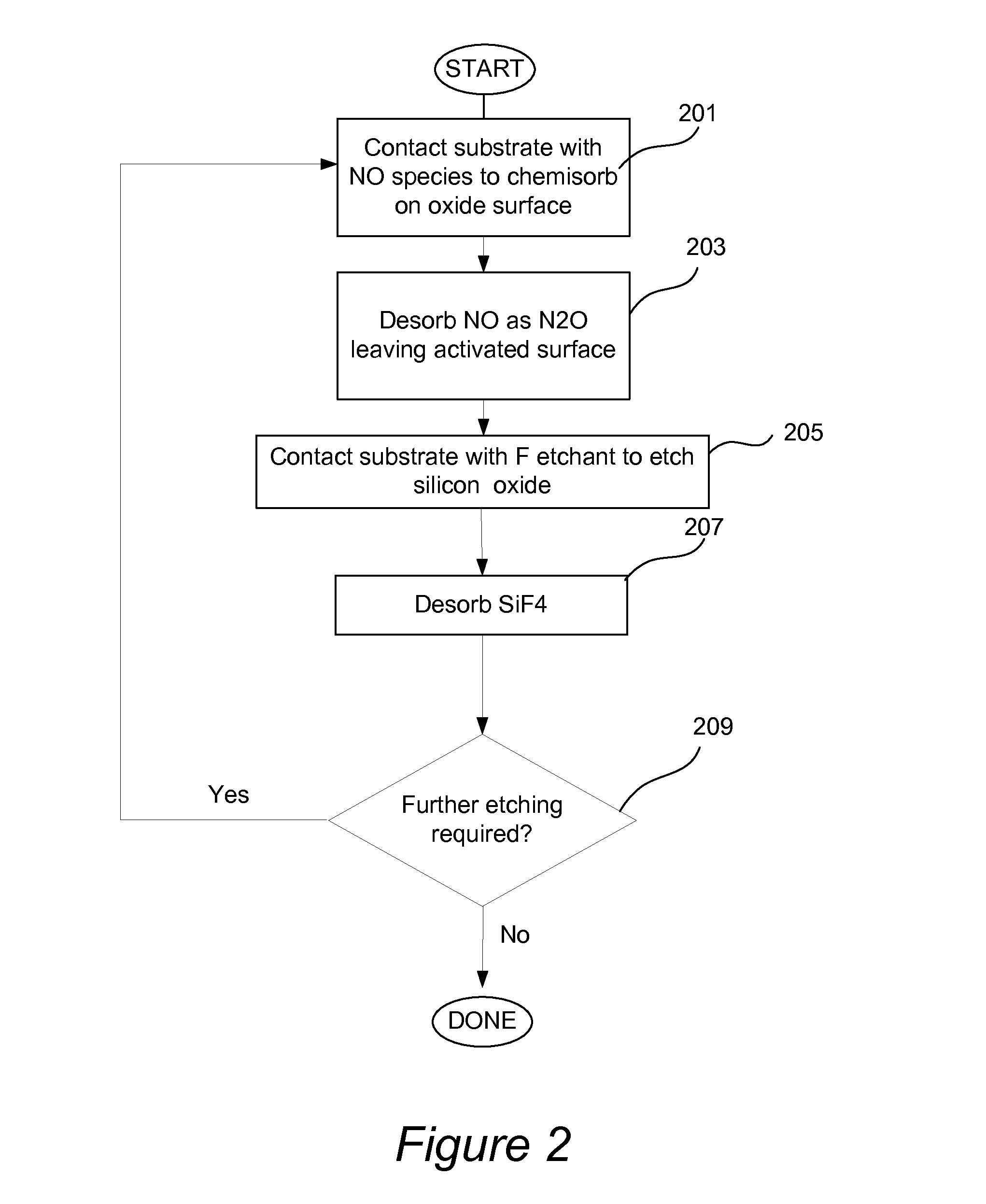Isotropic atomic layer etch for silicon oxides using no activation
a silicon oxide and atomic layer technology, applied in the direction of electrical equipment, basic electric elements, electric discharge tubes, etc., can solve the problems of high undesired native oxide and other oxides, limited control methods of one or several atomic layers, and difficulty in further processing steps
- Summary
- Abstract
- Description
- Claims
- Application Information
AI Technical Summary
Benefits of technology
Problems solved by technology
Method used
Image
Examples
example
[0052]In order to more fully illustrate features of a specific embodiment, the following non-limiting example of an etch process in accordance with FIGS. 4 and 5 is provided. An example of an etch process is to 1) load a substrate containing an oxide into a vacuum housing; 2) optionally pre-treat the sample to remove surface oxides or silanol bonds; 3) strike a plasma of NO gas (or a gas mixture of about 50% O2+50% N2O by volume) at 1.0-3.0 Torr to passivate the oxide surface; 4) add a fluorine containing gas to the plasma such as CF4 (about 5-7% by volume); 5) turn off the plasma and fluorine source and let the NO desorb and initiate etching; 6) optionally purge the vacuum chamber with an inter gas such as nitrogen or argon; 7) repeat steps 3-6 as needed to etch target film thickness.
[0053]Apparatus
[0054]The methods described herein can be practiced in a variety of apparatuses that are equipped with delivery lines and control mechanisms configured for sequential delivery of gaseous...
PUM
| Property | Measurement | Unit |
|---|---|---|
| Temperature | aaaaa | aaaaa |
| Angle | aaaaa | aaaaa |
Abstract
Description
Claims
Application Information
 Login to View More
Login to View More - R&D
- Intellectual Property
- Life Sciences
- Materials
- Tech Scout
- Unparalleled Data Quality
- Higher Quality Content
- 60% Fewer Hallucinations
Browse by: Latest US Patents, China's latest patents, Technical Efficacy Thesaurus, Application Domain, Technology Topic, Popular Technical Reports.
© 2025 PatSnap. All rights reserved.Legal|Privacy policy|Modern Slavery Act Transparency Statement|Sitemap|About US| Contact US: help@patsnap.com



